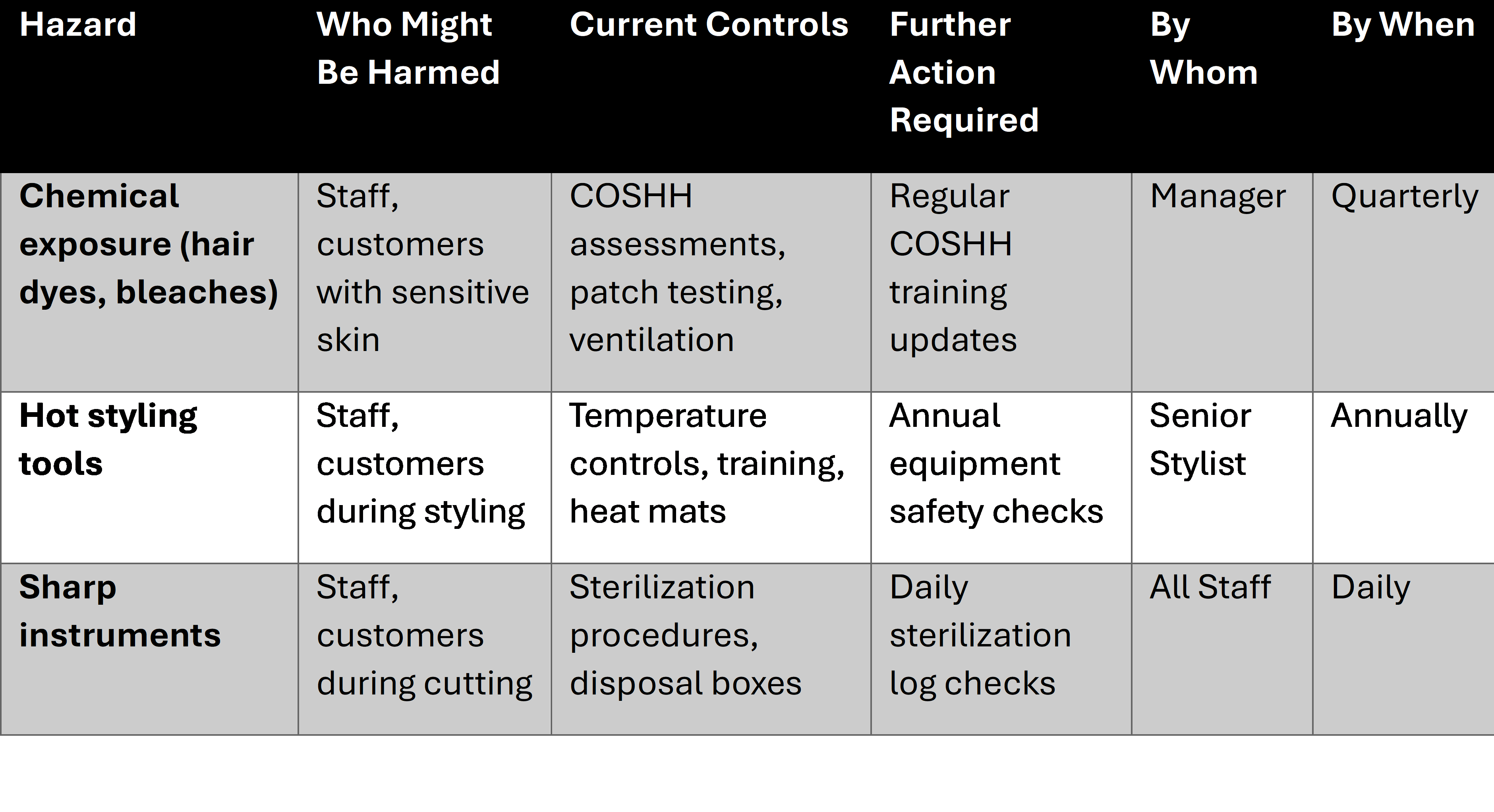The Correct HSE 5-Step Risk Assessment Process
Beauty businesses must follow the HSE's mandatory 5-stepapproach for workplace risk assessments:
Step 1: Identify the Hazards - Walk around your beauty salon and identify potential sources of harm, including:
- Chemical hazards from hair dyes, bleaches, nail products, and cleaning agents.
- Hot styling tools like straighteners, curling irons, and wax heaters.
- Sharp instruments including scissors, razors, and cuticle tools.
- Electrical equipment and potential electrocution risks.
- Slip, trip, and fall hazards from wet floors and trailing cables.
Step 2: Decide Who Might Be Harmed and How - Identify groups of people at risk, such as:
- Staff members who handle chemicals daily and operate equipment
- Customers receiving treatments and exposed to products
- Visitors including delivery personnel and maintenance workers
- Vulnerable groups like pregnant women, young workers, and those with allergies
Step 3: Evaluate the Risks and Decide on Precautions
Assess existing control measures and determine if additional precautions are needed. This must include:
- COSHH assessments for all hazardous substances used in beauty treatments
- Evaluation of whether risks are "reasonably practicable" to control
- Implementation of the hierarchy of controls: elimination, substitution, engineering controls, administrative controls, and PPE
Step 4: Record Your Findings and Implement Them
If you employ five or more people, you must record significant findings in writing. This includes:
- Hazard identification with specific beauty salon risks
- Control measures already in place
- Further actions required with assigned responsibilities and deadlines
- Training requirements for staff handling hazardous substances
Step 5: Review Your Assessment and Update if Necessary
Risk assessments must be reviewed regularly, typically annually, or when:
- New equipment or products are introduced
- Changes are made to salon layout or procedures
- After any accidents or near-misses occur
- When new staff are employed
Beauty-Specific HSE Requirements
- COSHH Compliance
Beauty salons must conduct specific Control of Substances Hazardous to Health (COSHH) assessments because they use numerous hazardous chemicals:
- Hair dyes and bleaching agents that can cause dermatitis and allergic reactions
- Nail products including acrylics that can cause respiratory issues
- Cleaning chemicals and sterilizing solutions
- UV gel products and solvents in nail treatments
Industry-Specific Hazards to Address
Your HSE-compliant risk assessment must cover:
- Chemical exposure through skin contact and inhalation
- Biological hazards from potential cross-contamination and blood exposure
- Physical hazards including burns from hot wax and styling tools
- Ergonomic risks from prolonged standing and repetitive motions
- Fire hazards from flammable chemicals and electrical equipment
Corrected Risk Assessment Template Structure
Instead of the crisis management format in your attachment, beauty salons need a workplace risk assessment that follows this HSE-compliant structure:

.png)